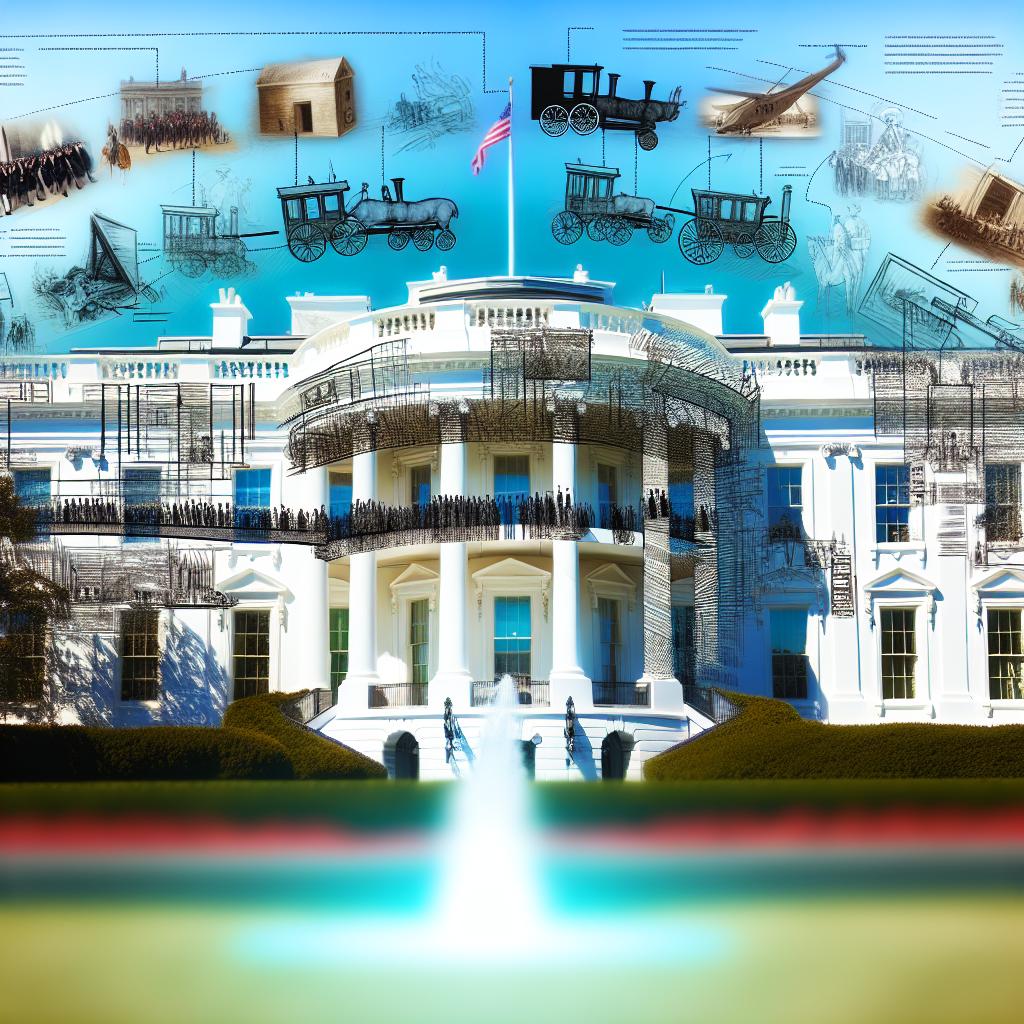Contents
The Construction and Early Years
The history of the White House, an emblem of American leadership and a cornerstone of the nation’s architectural heritage, traces back to 1792 with the laying of its cornerstone. Located prominently at 1600 Pennsylvania Avenue NW in Washington, D.C., the mansion was the brainchild of the Irish-born architect James Hoban. His design was chosen by President George Washington after a national competition that sought to find the perfect design for what would become the president’s residence. Despite his pivotal role in its conception, President Washington never had the opportunity to reside in the White House. The residence was only completed in 1800, during the presidency of John Adams.
The selection of materials for the construction was deliberate and noteworthy. The mansion was built using sandstone sourced from Aquia Creek, which was later painted white, giving the building its distinctive appearance. Since John Adams moved in, the White House has served as the home for all U.S. presidents. Adams and his wife, Abigail Adams, became the first occupants, adapting to the unfinished city around them.
Washington, D.C., designed by Pierre Charles L’Enfant, was still in its infancy, and the development of the surrounding area was gradual. The early years of the White House not only witnessed the growth of the city but also the establishment of the executive branch of the United States government within its walls. This period laid the groundwork for what the White House would come to represent in American society.
The British Invasion and Rebuilding
The early 19th century was a tumultuous time for the White House. During the War of 1812, specifically in 1814, the British army invaded Washington, D.C., posing a grave threat to the young nation’s capital. The White House suffered significant damage during this invasion, as the British forces set fire to the building. The blaze gutted the mansion, leaving little more than the exterior walls intact.
The rebuilding of the White House exemplified the resilience and determination of the nation. James Hoban, the original architect, returned to spearhead the reconstruction efforts. The restoration was completed by 1817, during the presidency of James Monroe. This period of rebuilding was not just about physical reconstruction but also about reaffirming the U.S. identity and the permanence of its institutions. The swift restoration of the White House sent a message that the United States would withstand external threats and recover stronger than before.
Expansion and Renovations
The White House underwent numerous transformations throughout the 19th and 20th centuries, reflecting changes in the nation and the presidency itself. One of the major renovation projects was undertaken under the leadership of Theodore Roosevelt between 1902 and 1903, guided by architect Charles McKim. This renovation significantly altered the White House’s functionality. The president’s office was relocated from the second floor to a new West Wing, establishing what would later become known as the Oval Office. This change accommodated the growing demands on the presidency in the modern age.
Subsequent presidents continued to leave their mark on the residence. During the presidency of Franklin D. Roosevelt, notable additions included the South Portico and the East Wing, which served to expand the capacity and functionality of the building. Another significant structural renovation occurred during the term of Harry S. Truman. Recognizing structural concerns, Truman initiated a comprehensive renovation that replaced the interior with a steel frame, while meticulously preserving the historical exterior facade. This renovation balanced the need to modernize the facilities while maintaining the historical integrity of the mansion.
The White House as a Symbol
Beyond its role as a residence for the president and their family, the White House stands as a potent symbol of American governance and democratic ideals. It serves as the venue for numerous state functions and diplomatic events, ranging from hosting foreign leaders to significant policy announcements. The building frequently shifts into the spotlight during moments of national celebration or mourning, reflecting the emotions and priorities of the nation it represents.
Moreover, the White House is an educational symbol, attracting millions of visitors each year who come to glimpse the setting of pivotal moments in U.S. history. For those seeking a deeper understanding of this iconic building, resources such as the White House Historical Association offer extensive research and insights into its storied past.
The multifaceted use of the White House continues to evolve, adapting to the needs of the presidency while remaining a testament to the enduring nature of the United States. As contemporary presidents navigate the complexities of modern governance, the White House remains a steadfast symbol of continuity. The residence serves as a powerful monument to the nation’s resilience, adaptability, and rich historical legacy.
The White House, with its storied history and ongoing significance, embodies the evolution of the United States from its early days to the present. Within its walls, the legacy of American leadership is preserved and celebrated, standing as a beacon of governance and a reflection of the nation’s historical journey. Whether experiencing its grandeur firsthand or learning about its history from afar, the White House remains an unparalleled icon of American heritage.

